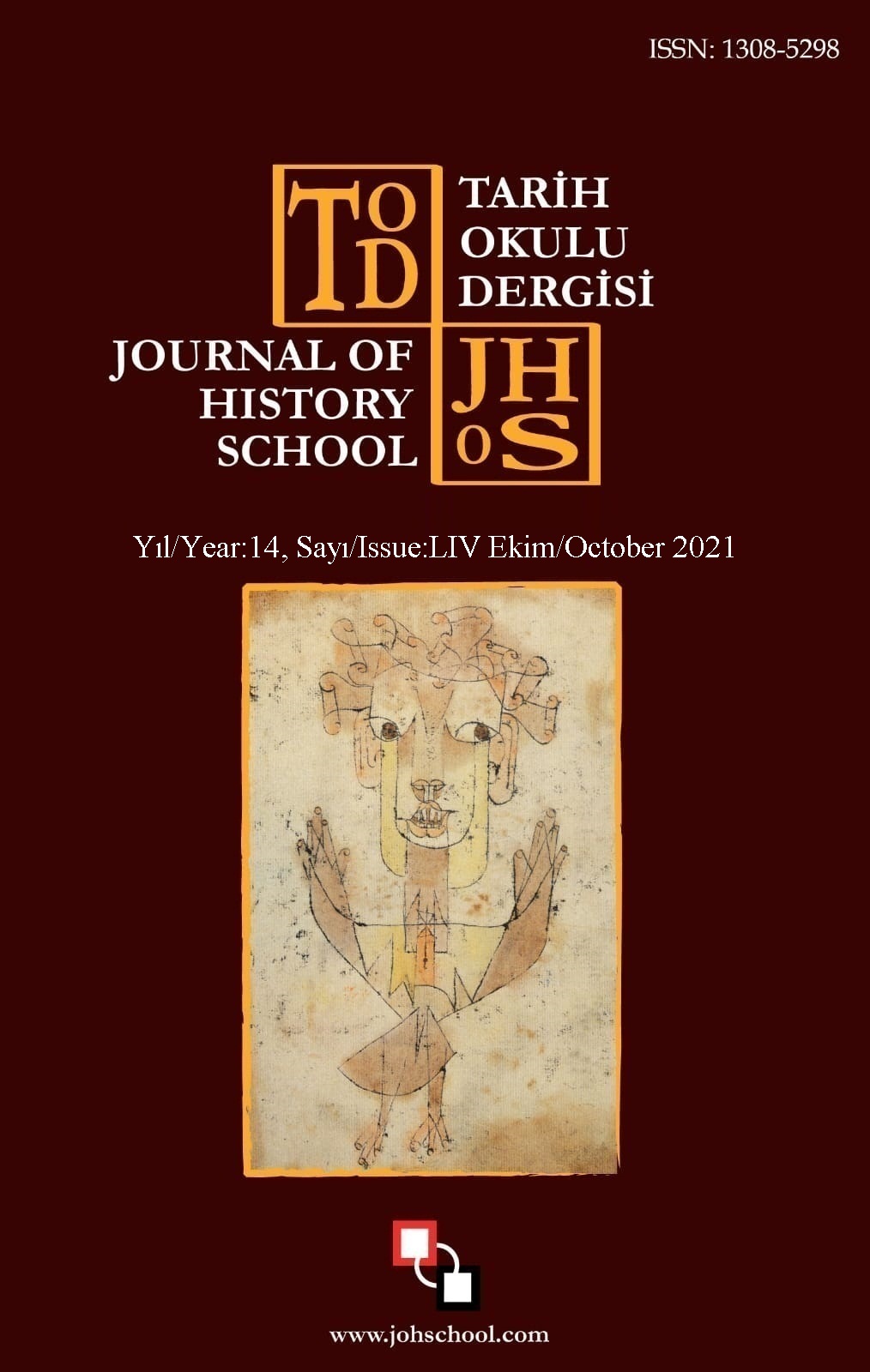Author :
Abstract
Adlî mahlası ile şiirler yazan Sultan III. Mehmed’in entelektüel bir kimliği olduğu, kendisine sunulan edebî eserleri ilgiyle karşıladığı bilinmektedir. Gerek babası Sultan III. Murad gerekse kendi dönemi çeşitli eserlerin yazılıp resmedildiği, sanat alanında üretkenliğin çok olduğu bir dönemdi. Her ne kadar Sultan III. Mehmed dönemi (1595-1603), özellikle siyasi ve ekonomik alanda kötü bir gidişat arz etse de kültürel ve sanatsal çalışmaların canlılığını korumaya devam ettiği bir zaman dilimi olmuştur. Özellikle sarayın bünyesinde varlığını devam ettiren Ehl-i Hiref-i Hâssa Teşkilatı aracılığıyla birçok farklı alanda, günümüze dahi gelebilen birbirinden ihtişamlı sanat eserleri ortaya konulmuştur. Devlet bünyesinde kurulup Osmanlı sanatına yön veren Ehl-i Hiref-i Hâssa Teşkilatı’nın ana kaynağı olan birçok maaş defteri bulunmaktadır. Çalışmada dönemin sanat dalları ve sanatkârlarının tespit edildiği bu defterlerden TSMA. D. 9613/2’de kayıtlı bulunan, 1596 yılı defteri ışığında Sultan III. Mehmed dönemi sanat ortamını oluşturan saray sanatkârları ele alınmıştır. Araştırmalar sonucunda Ehl-i Hiref-i Hâssa Teşkilatı’nın varlık gösterdiği süreç içerisinde sanatkâr sayısının en fazla olduğu dönemin Sultan III. Mehmed dönemi olduğu görülmüştür.
Keywords
Abstract
Sultan Mehmed III, who wrote poems under the pseudonym Adlî, had an intellectual identity and is known for his interest in the literary works presented to him. The periods of both his father Sultan Murad III and himself were the periods in which various works were written and illustrated, and there was a huge productivity in the field of art. The period of Sultan Mehmed III (1595-1603) was a period in which cultural and artistic studies continued to maintain their vitality, even though it had a bad course, especially in the political and economic fields. Especially through the Ahl-i Hiraf-i Hâssa Organization, which continued to exist within the palace, magnificent art works had been produced in many different areas, which survive even today. There are many salary registration books, which are the main sources for the Ahl-i Hiraf-i Hâssa Organization established within the state and it directed Ottoman art. In the study, in the light of the registration book dated 1596 and under the TSMA. D. 9613/2, in which art branches and craftsmen of the period are identified, palace craftsmen of the period of Sultan Mehmed III who formed the art scene of the era are discussed. According to the results of the research, it was the period of Sultan Mehmed III when the Ahl-i Hiraf-i Hâssa Organization had the largest number of artists in its period of activity.
Keywords
- Afyoncu, E. (2006). Müteferrika, Türkiye Diyanet Vakfı İslâm Ansiklopedisi içinde (Cilt. 32, s.183-185). TDV yayınları.
- Akcan Ekici, S. (2018a). 17. Yüzyılda Osmanlı Devleti’nde Ehl-i Hiref-i Hâssa Teşkilatı Birimleri ve Yapısal Özellikleri. Yayınlanmamış doktora tezi, İstanbul Üniversitesi Sosyal Bilimler Enstitüsü.
- Akcan Ekici, S. (2018b). 17. yüzyıl saray mücellitleri. Akademik Sosyal Araştırmalar Dergisi, 86, 219-238.
- Akcan Ekici, S. (2020). 1801 tarihli ehl-i hiref-i hâssa defterinde osmanlı devletinin sanatkârları. Journal of History School, 47, 2187-2221. http://dx.doi.org/10.29228/joh.45244
- Arıtan, A. S. (1993). Ciltçilik, Türkiye Diyanet Vakfı İslâm Ansiklopedisi içinde (Cilt. 7, s. 551-557). TDV yayınları.
- Bağcı, S., Çağman, F., Renda, G., & Tanındı, Z. (2006). Osmanlı Resim Sanatı. Kültür ve Turizm Bakanlığı.
- Bozcu, P. (2010). Osmanlı Sarayında Sanatçı ve Zanaatçı Teşkilatı Ehl-i Hiref. Yayınlanmamış uzmanlık tezi, Kültür ve Turizm Bakanlığı Kültür Varlıkları ve Müzeler Genel Müdürlüğü.
- Çağman, F. (1984). Serzergerân mehmed usta ve eserleri. Kollektif (Ed.), Kemal Çığ’a Armağan içinde (s. 51-87). Topkapı Sarayı Müzesi Müdürlüğü yayınları.
- Çağman, F. (1987). Altın hazine matarası. Topkapı Sarayı Müzesi Yıllık 2 içinde (s. 85-122). İstanbul matbaası yayınları.
- Çağman, F. (1988). Mimar sinan döneminde sarayın ehl-i hiref teşkilâtı. Z. Sönmez. (Haz.), Mimar Sinan Dönemi Türk Mimarlığı ve Sanatı içinde (s. 73-77). Türkiye İş Bankası yayınları.
- Çağman, F. (1995). Tarihi gelişimi içinde osmanlı sarayı minyatürleri. M. Özel. (Haz.), Geleneksel Sanatlar Türk Sanatları içinde (s.187-227). Kültür Bakanlığı yayınları.
- Çağman, F. (2000). Behind the ottoman canon the works of the imperial palace. Palace of Gold And Light Treasures From The Topkapı içinde (s.46-56). Palace Arts Foundation.
- Çağman, F. (2004). Minyatür. Osmanlı Uygarlığı C. II, H. İnalcık, G. Renda. (Haz.). Kültür ve Turizm Bakanlığı yayınları.
- Devellioğlu, F. (2006). Osmanlıca-Türkçe Ansiklopedik Lûgat. Aydın kitabevi
- Emecen, F. (2003). III. Mehmed, Türkiye Diyanet Vakfı İslâm Ansiklopedisi içinde (Cilt 28, s.407-413). TDV yayınları.
- İpşirli, M. (1999). Tarih-i Selânikî I-II. Türk Tarih Kurumu.
- İrepoğlu, G. (2012). Osmanlı Saray Mücevheri. Bilkent kültür girişimi.
- Kahraman, S. A., Dağlı, Y. (2003). Evliya Çelebi Seyahatnâmesi: İstanbul I. Yapı Kredi.
- Kazan, H. (2007). XV. ve XVI. Asırlarda Osmanlı Sarayının Sanatı Himayesi. Yayınlanmış doktora tezi, Marmara Üniversitesi Sosyal Bilimler Enstitüsü.
- Kırımtayıf, S. (1996). XV. Ve XIX. Yüzyıllar Arasında Osmanlı Saray Sanatı Teşkilatı. Yayımlanmamış doktora tezi, İstanbul Teknik Üniversitesi Sosyal Bilimler Enstitüsü.
- Mahir, B. (2004). Osmanlı Minyatür Sanatı. Kabalcı.
- Meriç, R. M. (1953). Türk Nakış San’atı Tarihi Araştırmaları I Vesikalar. Türk ve İslâm San’atları Tarihi Enstitüsü.
- Pakalın, M. Z. (1983). Osmanlı Tarih Deyimleri ve Terimleri Sözlüğü I-III. Milli Eğitim Bakanlığı yayınları.
- Sâmî, Ş. (2006). Kâmûs-ı Türkî. Çağrı yayınları.
- Sertoğlu, M. (1986). Osmanlı Tarih Lûgatı. Enderun kitapevi.
- Tanındı, Z. (2006). Nakkâş hasan paşa, Türkiye Diyanet Vakfı İslâm Ansiklopedisi içinde (Cilt. 32, s. 329-330). TDV yayınları.
- Tarım Ertuğ, Z. (2009). Sorguç, Türkiye Diyanet Vakfı İslâm Ansiklopedisi içinde (Cilt. 37, s. 378-380). TDV yayınları.
- Uzunçarşılı, İ. H. (1986). Osmanlı sarayında ehl-i hiref sanatkârlar defterleri. Belgeler Türk Tarih Belgeleri Dergisi. 11,15, 23-76.
- Uzunçarşılı, İ. H. (1988). Osmanlı Devleti’nin Saray Teşkilâtı. Türk Tarih Kurumu.





